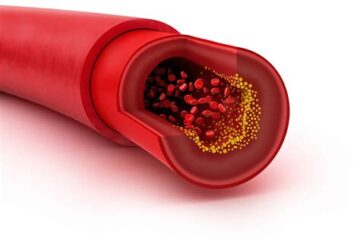
בעדכון זה - עלייה בזיהומי נגיף הדנגי @ יואל קסלר .קום - אנו מציגים נתונים חדשים של המרכז לבקרת מחלות על העלייה בזיהומים בנגיף הדנגי בארצות הברית.

In this update – Rise in Dengue virus infections @ יואל קסלר .קום – we present new data from the Centers for Disease Control about the increase in dengue virus infections in the United states. The original article can be found here.
Summary
The Centers for Disease Control and Prevention (CDC) is issuing this Health Alert Network (HAN) Health Advisory to notify healthcare providers, public health authorities and the public of an increased risk of dengue virus (DENV) infections in the United States in 2024. Global incidence of dengue in 2024 has been the highest on record for this calendar year; many countries are reporting higher-than-usual dengue case numbers. In 2024, countries in the Americas have reported a record-breaking number of dengue cases, exceeding the highest number ever recorded in a single year. From January 1 – June 24, 2024, countries in the Americas reported more than 9.7 million dengue cases, twice as many as in all of 2023 (4.6 million cases). In the United States, Puerto Rico has declared a public health emergency (1,498 cases) and a higher-than-expected number of dengue cases have been identified among U.S. travelers (745 cases) from January 1 – June 24, 2024. In the setting of increased global and domestic incidence of dengue, healthcare providers should take steps including:
- Have increased suspicion of dengue among people with fever who have been in areas with frequent or continuous dengue transmission within 14 days before illness onset,
- Order appropriate diagnostic tests for acute DENV infection: reverse transcription polymerase chain reaction [RT-PCR] and IgM antibody tests, or non-structural protein 1 [NS1] antigen tests and IgM antibody tests,
- Ensure timely reporting of dengue cases to public health authorities, and
- Promote mosquito bite prevention measures among people living in or visiting areas with frequent or continuous dengue transmission.
Background
Dengue is the most common arboviral disease globally. It is caused by four distinct but closely related dengue viruses (DENV-1, -2, -3, and -4). DENVs are transmitted through bites of infected Aedes species mosquito vectors. Infection with one DENV generally induces life-long protection against infection from that specific DENV but only protects against other DENVs for several months to years. Dengue is a nationally notifiable disease in the United States. Six U.S. territories and freely associated states are classified as areas with frequent or continuous dengue transmission: Puerto Rico, American Samoa, the U.S. Virgin Islands, the Federated States of Micronesia, the Republic of Marshall Islands, and the Republic of Palau. In the rest of the United States, local transmission of DENV has been limited, with sporadic cases or small outbreaks in Florida, Hawaii, and Texas. However, confirmed local DENV transmission has also been reported by Arizona and California over the past two years.
Approximately one in four DENV infections are symptomatic and can be mild or severe. Symptoms begin after an incubation period of 5–7 days (range 3–10 days) and present as fever accompanied by non-specific signs and symptoms such as nausea, vomiting, rash, muscle aches, joint pain, bone pain, pain behind the eyes, headache, or low white blood cell counts. Warning signs are specific clinical findings that predict progression to severe disease. Warning signs include abdominal pain or tenderness, persistent vomiting, clinical fluid accumulation (e.g., ascites, pleural effusion), mucosal bleeding, lethargy or restlessness, progressive increase of hematocrit, or liver enlargement >2cm. Severe disease, with associated severe bleeding, shock or respiratory distress caused by plasma leakage, or end-organ impairment, develops in 1 in 20 people with symptomatic dengue. Infants aged ≤1 year, pregnant people, adults aged ≥65 years, and people with certain medical conditions are at increased risk of severe dengue. Although a second DENV infection (i.e., with a different DENV from the first infection) carries a higher risk of severe disease than a first, third, or fourth infection, any infection can lead to severe disease.
Patients with symptoms compatible with dengue can be tested with both molecular and serologic diagnostic tests. All patients with suspected DENV infection should be tested with RT-PCR (i.e., a nucleic acid amplification test (NAAT)) or a NS1 antigen test, and also with IgM antibody test to confirm DENV infection. These tests can be considered regardless of the symptom onset date, although the test sensitivity of RT-PCR and NS1 antigen tests decrease after the first 7 days. IgG detection by enzyme-linked immunosorbent assay (ELISA) in a single serum sample should not be used to diagnose a patient with acute dengue because it does not distinguish between current and previous DENV infection. U.S. Food and Drug Administration (FDA)-approved testing is available at public health laboratories and some commercial laboratories. State, tribal, territorial, and local health departments, and CDC can offer additional testing guidance.
There are no antiviral medications approved to treat dengue. Treatment is supportive and requires careful volume management. Appropriate triage, management, and follow-up remain the most effective interventions to reduce dengue morbidity and mortality. Expectant management of patients at high risk for severe disease and rapid initiation of a standardized fluid replacement strategy recommended by the World Health Organization (WHO) can decrease mortality from 13% to <1%. In June 2021, the Advisory Committee of Immunization Practices recommended a dengue vaccine, Dengvaxia, for children aged 9–16 years with laboratory confirmation of previous DENV infection and living in areas with frequent or continuous dengue transmission such as Puerto Rico. While the vaccine is considered safe and effective, the manufacturer (Sanofi Pasteur, Inc., Paris France) has discontinued production citing a lack of demand. Vaccine administration will continue in Puerto Rico until available doses expire in 2026.There are no vaccines recommended for travelers, adults, or persons without a previous DENV infection.
Dengue cases resurged globally after the COVID-19 pandemic. In 2023, more than 4.6 million cases and 4000 deaths were reported in the Americas region. As of June 24, 2024, more than 9.7 million dengue cases have been reported in the Americas, twice as many as in all of 2023 (4.6 million cases). Dengue transmission peaks during the warmer and wetter months in many tropical and subtropical regions. Dengue cases are likely to increase as global temperatures increase. Higher temperatures can expand the range of the mosquitoes that spread dengue, as well as affect other factors that facilitate virus transmission like faster viral amplification in the mosquito, increased vector survival, and changes in reproduction and biting rates. U.S. summer travel often overlaps with the months of increased dengue activity in many countries. Epidemics in the Americas region increase travel-associated cases and limited local transmission in the continental United States. A higher-than-expected number of dengue cases (total of 2,241 cases, including 1,498 in Puerto Rico) were reported in the United States from January 1 – June 24, 2024. Public health authorities in Puerto Rico declared a public health emergency in March 2024 because of the high number of cases reported during the low dengue season. Healthcare providers should be prepared to recognize, diagnose, manage, and report dengue cases to public health authorities; public health partners should investigate cases and disseminate clear prevention messages to the public. The CDC is actively implementing several strategies to address the increase in cases of dengue in the United States, including:
- Launching a program-led emergency response, which was activated on April 8, 2024.
- Providing regularly scheduled monthly situational updates on dengue to partners, stakeholders, and jurisdictions.
- Expanding laboratory capacity to improve laboratory testing approaches.
- Collaborating with State, Tribal, Local, and Territorial Health Departments to strengthen dengue surveillance and recommend prevention strategies.
- Educating the public on dengue prevention.
Recommendations for Healthcare Providers
- Maintain a high suspicion for dengue among patients with fever and recent travel (within 14 days before illness onset) to areas with frequent or continuous dengue transmission.
- Consider locally acquired dengue among patients who have signs and symptoms highly compatible with dengue (e.g., fever, thrombocytopenia, leukopenia, aches, pains, rash) in areas with competent mosquito vectors.
- Order appropriate FDA-approved dengue tests (RT-PCR and IgM antibody tests, or NS1 and IgM antibody tests), and do not delay treatment waiting for test results to confirm dengue.
- Know the warning signs for progression to severe dengue, which include abdominal pain or tenderness, persistent vomiting, clinical fluid accumulation, mucosal bleeding, lethargy or restlessness, and liver enlargement.
- For people with suspected dengue who do not have warning signs and are not part of a population at high risk for severe dengue, consider outpatient management with close follow-up.
- Teach patients about the warning signs that may appear as their fever starts to decline and instruct them to seek care urgently if they experience any warning signs.
- Recognize the critical phase of dengue. The critical phase begins when fever starts to decline and lasts for 24–48 hours. During this phase, some patients require close monitoring and may deteriorate within hours without appropriate intravenous (IV) fluid management.
- Hospitalize patients with severe dengue or any warning sign of progression to severe dengue and follow CDC/WHO protocols for IV fluid management.
- Follow local guidelines to report dengue cases to state, tribal, local, or territorial health departments.
For more interesting articles like this check out our blog.


